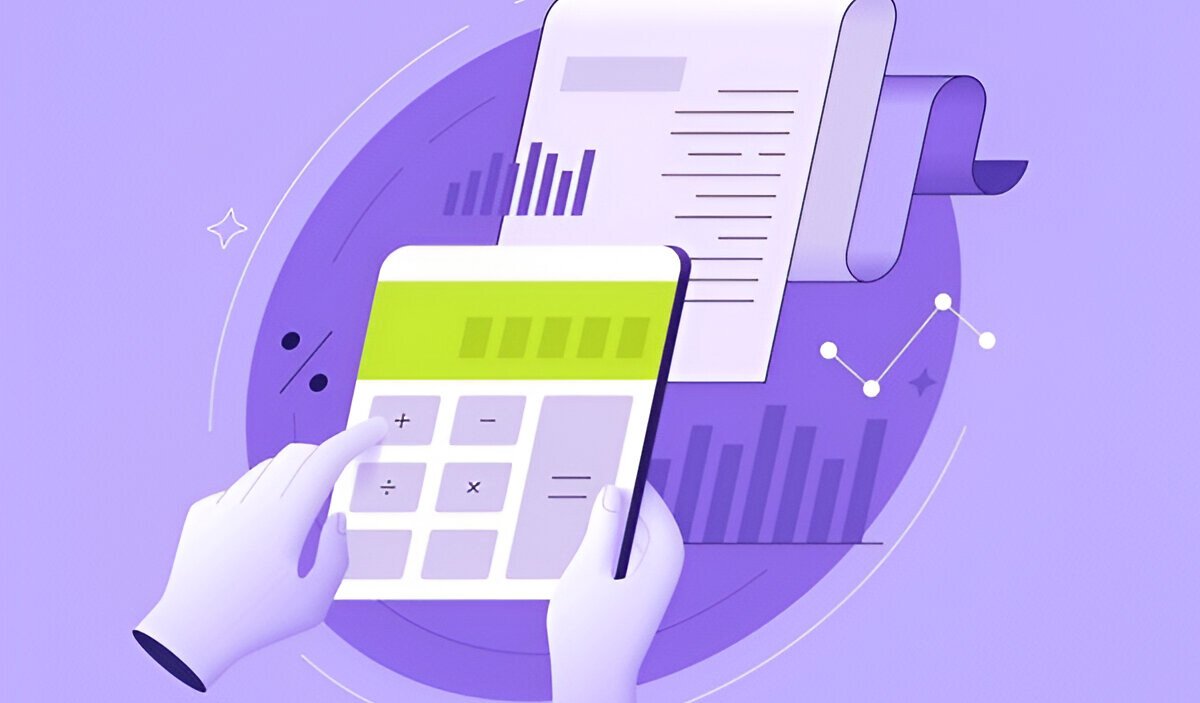If you’ve used a financial calculator, you may have noticed something peculiar. The results almost always display two decimal places by default. Have you ever wondered why this happens or whether it’s really necessary? The answer lies in a combination of accuracy, tradition, and practicality.
This blog dives into why financial calculators default to two decimals, how this practice ties into financial precision, and what impact it has on decision-making. By the end, you’ll gain a deeper appreciation for this small but impactful design choice.
The Two Decimal Standard in Financial Calculators
The default use of two decimal places is tied to financial norms, where cents or hundredths of a unit play a critical role. For example, currencies like USD, EUR, and GBP all have values structured into two decimal places, where 1 cent equals 0.01 in the currency’s base unit.
When you calculate interest, loan payments, or investments, every fraction of a cent can add up to significant amounts over time. By sticking to two decimals, financial calculators ensure your results align with real-world monetary values. Take, for example, a loan calculation. A slightly rounded figure could lead to discrepancies across dozens of payments, affecting the total balance due.
Financial tools, like calculators, are designed to reflect this degree of precision for accuracy and usability.
Precision and Its Role in Financial Calculations
Why Precision Matters
Financial decisions often involve compound interest, tax rates, and intricate investment scenarios. These calculations leave no room for ambiguity. Even minuscule differences can result in noticeable variations in financial outcomes, especially when scaled over time (as in retirement planning) or scope (as in large corporate budgets).
Consider this scenario:
A 30-year mortgage at a 4.8% annual interest rate compounded monthly results in different monthly payments when rounded off inconsistently. If a calculator only displays whole numbers, you could get results that fail to add up correctly over years of payments.
By using two decimals, financial calculators stay aligned with commonly accepted financial standards while preventing errors tied to imprecision or rounding issues.
The Importance of Uniformity
Beyond accuracy, standardizing two decimals makes financial calculations uniform and easy to interpret across different platforms, tools, and scenarios. Banks, financial institutions, and governments globally operate under similar conventions for currency transactions, which ensures consistency whether you’re solving an equation on paper or working with a calculator. This small design choice reflects the broader shift in how digitization is shaping consumer financial services.
Historical Background of Currency and Decimals
Currency systems provide an interesting look into the origins of financial precision. Historically, many currencies were divided into fractions, such as 1/20th or 1/12th of a unit. However, with global industrialization and trade came the universal adoption of decimals for simplicity.
Decimal systems, like the two-decimal format in dollars and cents, became the backbone of financial operations worldwide. By the mid-20th century, calculators were designed to reflect this new standard, making them intuitive and applicable for everyday life.
At this point, two decimal places became not just a technical feature but a reflection of deeper economic practices.
How Calculators Handle Rounding in Financial Contexts
When calculations involve many fractions of a cent, rounding becomes a crucial mechanism to deliver user-friendly outputs. But rounding also introduces its own challenges. Financial calculators often employ the “round-half-up” method, the most standard practice in financial operations. For example:
- 4.735 → 4.74 (rounded up)
- 4.734 → 4.73 (rounded down)
However, some financial contexts, like tax calculations or currency exchanges, may demand alternative rounding strategies—for instance, “round half to even” or truncation.
Thus, while financial calculators standardize their precision to two decimal places, they also integrate rounding algorithms to ensure the final output reflects real-world financial norms.
How Precision Affects Financial Decisions
Impacts on Business Decisions
For businesses, calculator precision is more than a detail; it’s a necessity. Whether calculating daily revenues, expense budgets, or investment projections, every cent contributes to the bottom line. A 0.01% error in projecting revenue on a $10 million project can create discrepancies worth tens of thousands of dollars.
High precision allows businesses to avoid costly mistakes, streamline audits, and make more confident decisions.
Benefits for Consumers
Individual users also benefit from precise financial calculations. Whether it’s determining the monthly payment for a student loan or calculating compound savings toward future goals, accurate results ensure you’re working from a realistic financial picture. Precision eliminates guesswork, fostering trust in your tools and decisions.
Alternative Calculator Options and Custom Settings
While the two-decimal format dominates financial calculators, some models allow users to customize precision based on their unique needs. For instance:
- Extended decimals: Scientific calculators and advanced financial tools often display up to 10 decimal places, making them ideal for specialized operations like engineering or forex trading.
- Whole numbers only: Certain settings can exclude decimal places altogether, offering simplified results for quick, everyday estimations.
Understanding these options allows you to tailor your calculations, striking a balance between accuracy and efficiency.
Additionally, emerging tools like apps or platforms designed for financial modeling often go above and beyond. For example, some applications provide real-time visual feedback on how altering precision affects projections, empowering users to experiment confidently.
Striking the Balance Between Precision and Simplicity
No financial tool is perfect, but calculative precision merges usability with real-world accuracy. The default two-decimal approach of financial calculators respects the established norms of currency while providing an intuitive format for users.
Ultimately, whether you’re a professional managing corporate finances or an individual budgeting for personal goals, understanding the power of precision makes you not just a calculator user but also a financial decision-maker with the tools to succeed.








What Is FinTech? A Beginner’s Guide to the Finteching 2025
Harnessing AI and Machine Learning for Fraud Detection in Digital Finance
Digital Wallets vs. Traditional Banking: What Consumers Need to Know
Embedded Finance: How Seamless Financial Services Are Integrating into Everyday Apps
Embedded Finance: How Seamless Financial Services Are Integrating into Everyday Apps
AI-Powered Credit Scoring: Revolutionizing Digital Lending in the Digital Finance Era
Harnessing AI in Digital Finance: Revolutionizing Risk Management and Customer Experience
How Open Banking APIs Are Revolutionizing Digital Finance?